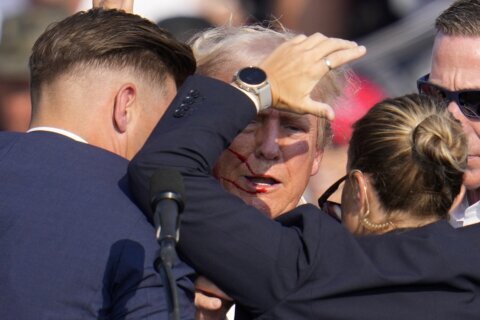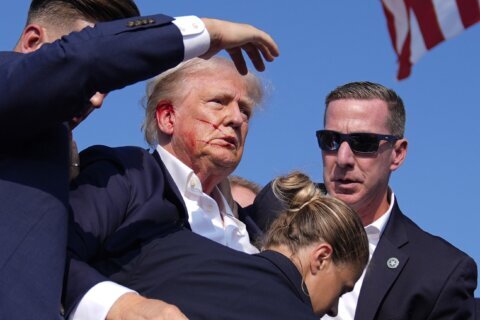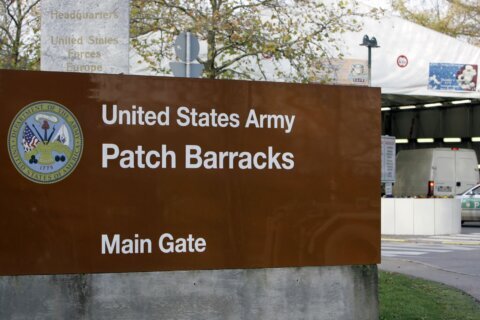“Scary” was how a top Homeland Security Department official described the shooting rampage as it unfolded Saturday on an Odessa, Texas, highway. Seven people died, and dozens were injured.
It was the third mass shooting in the month of August and the fourth in 32 days.
The string of coldblooded carnage is a hallmark of a troubling pattern with which DHS’ Cyber Security and Infrastructure Security Agency (CISA) is wrestling.
“The threat environment has certainly evolved over the last number of years,” said Brian Harrell, CISA’s assistant director, in an exclusive interview with WTOP.
“We’ve gone from the Parkland [High School] shooting a little over a year ago, where 17 kids were killed, to just a couple weeks ago where we had Dayton, we had El Paso and we had the garlic festival out in California,” he said.
Harrell’s point was that mass shooters seem more determined to find targets that will provide little or no resistance.
“People are now focused on that soft target — that crowded places phenomenon, where they’re trying to do the most damage and most pain, and they’re inflicting that kind of will on our most vulnerable citizens throughout the country,” he said.
Listen to Target USA: J.J. Green’s national security podcast
Five days after Harrell spoke to WTOP, the Odessa shooting introduced an even more dangerous soft target scenario: a killer with weapons, in a vehicle, on a busy highway.
“I was at home with my family when I heard about the tragic events in Texas, and my first thought of course went to the victims and their families, and then to the first responders on the scene,” Harrell said.
“Your next thought after a tragedy like that is to ask how we prevent this from happening again. How do you reach more people about the importance of planning and preparedness?”
Cognizant of the fact that it’s impossible to prevent every mass shooting, Harrell’s team is focused on four key elements to help mitigate the damage: “In addition to the physical security and protective measures that you would have put in place, it really comes down to connect, plan, train and report.”
Connecting communities with local law enforcement and first responders is the first step. Secondly, according to Harrell, is planning for the worst. “No longer is it safe to say, ‘I hope it doesn’t happen here,’ when in fact if it can happen there, maybe it can happen here,” he said.
Perhaps the most crucial component is training.
“We do active shooter workshops almost on a daily basis somewhere in this country,” said Harrell.
The people who lead those workshops are called protective security advisers (PSAs). They live in communities nationwide.
Ray Hannah is one of those people. He’s been the PSA in Maryland for almost 15 years.
“I’ve done close to 200 active shooter presentations. I’ve done schools on the collegiate level, K-12, religious organizations and anybody that would ask,” he said.
But he admits that while he’s seen a lot of violent scenarios while working as a PSA, a mobile, active shooter is not among them. Anomalies are part of the reason why the work he and other PSAs around the country do is so critical.
“After the Las Vegas shootings, hotels were very concerned about the high-ground threat from a shooter,” Hannah said. “After that, I did 15 active shooter presentations in that next month at hotels.”
A main component of their work is to make sure that the public has access to free-of-charge tools, products and intelligence to help them better secure their communities.
Alleviating fear in communities around the country is also a key goal of DHS efforts. And according to Michael Masters, national director and CEO of the Secure Community Network — the national homeland security initiative of The Jewish Federations of North America — the need for peace of mind can’t be overstated.
Masters visited a synagogue in Charlottesville, Virginia, that found itself in the middle of the 2017 “Unite the Right Rally,” during which three people died. Heather Heyer, 32, was killed after being hit by a car, and two Virginia State Police officers died when their helicopter crashed. At least 33 people were also injured.
What Masters heard made an indelible impression on him, he said.
There, he met with synagogue president Allen Zimmerman, who said “he was standing there looking across the narrow street, maybe 30 or 40 feet across, at two guys that were armed with AR-15s wearing swastikas and Confederate flags. And he said to me, ‘We just felt so alone,’” Masters said.
“My immediate reaction was, ‘That’s just wrong,’” Masters lamented. “No member of the Jewish community, no member of American society should be looking across the street at that and feel that they’re on their own.”
Eliminating that feeling is part of what DHS says it hopes to achieve.








